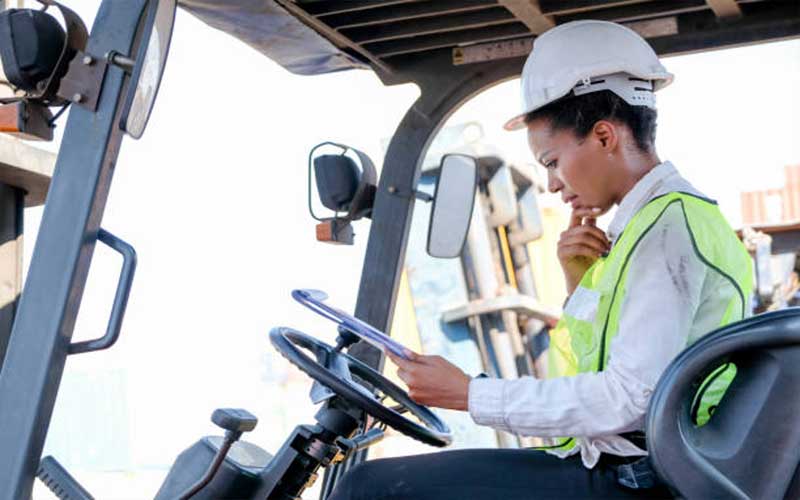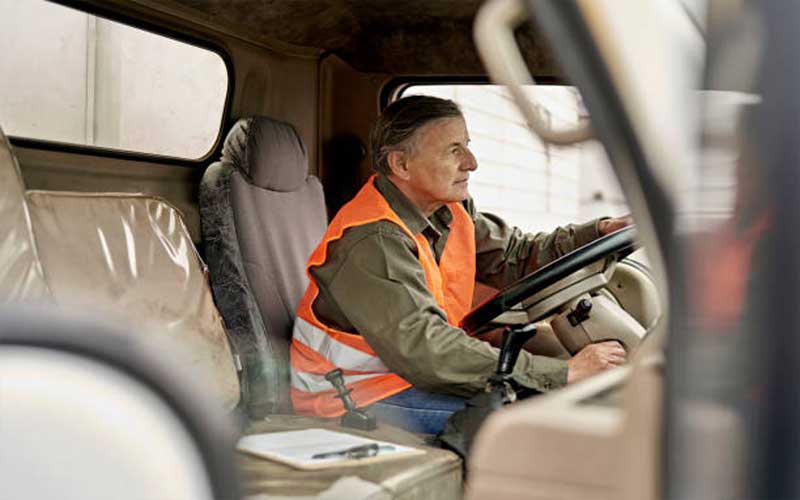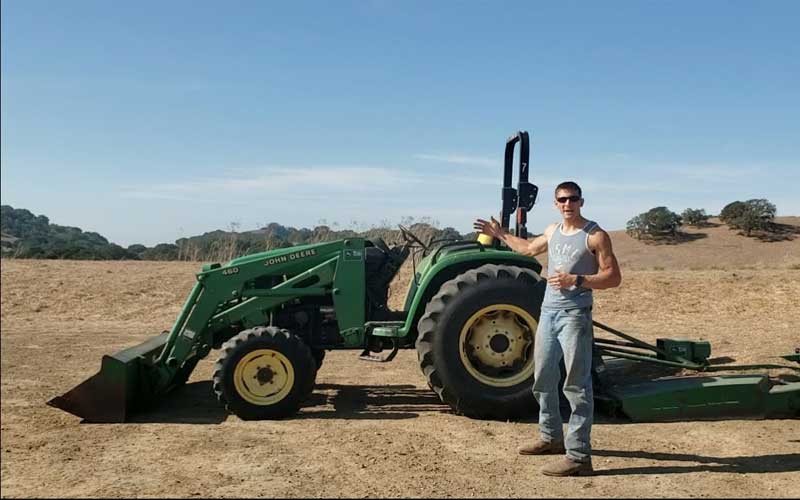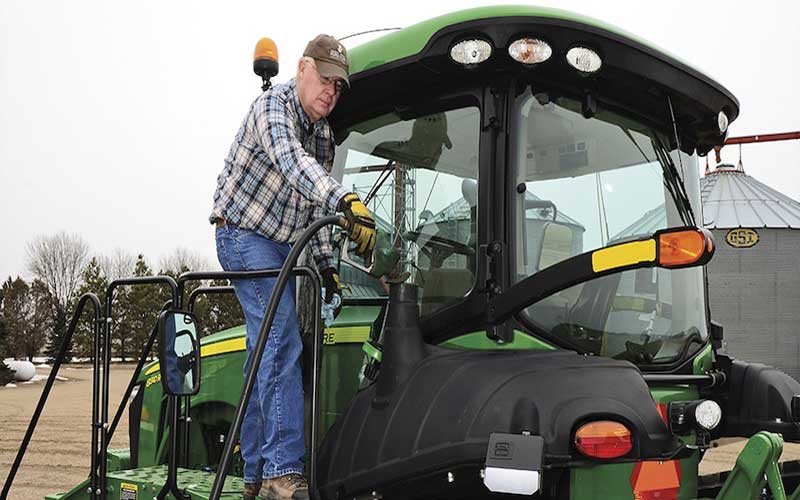Fertilizers, seeds, and numerous other items are transported to a field by tractors. They can also transport products. Tractors are made specifically to handle the difficulties that arise in farming. Therefore, farm machinery like tractors is quite beneficial.
In the United States, a tractor is used for daily farm work on about 90% of farms. So it’s crucial to know how to operate a tractor safely. To learn how to operate a tractor, you must comprehend the fundamentals described in this instructional text.
Read on to learn more.
Contents
Before You Drive – Safety Checks for Tractors

Tractors come in many sizes and are useful for various farm tasks. Trailers, buckets, plows, harrows, and forklifts are some examples of tractor extensions. With the help of a trailer, tractors may move cattle, prepare the ground for crop cultivation, and raise dead trees. If you can drive, it is a really useful skill and brings you a lot of satisfaction.
Inspect the tractor before moving it.
Before transferring the machine, inspect its condition and state after ensuring user safety protocols are followed. The first thing to check is flat tires or tires with low pressure.
To do this, you might wish to walk around the tractor. The tractor is unsteady and more prone to become bogged in the mud if its tires are underinflated. Take care of any loose bolts and nuts that require tightening. As tractor parts come off, loose bolts and nuts put you at risk.
One last check before you move.
Check the water level.
The next step is to check water, fuel, and oil levels. The oil tank can be located behind most tractors. Check the oil level after removing the filter. If necessary, replace the oil or top it off. Next, open the bonnet on a contemporary tractor to find the oil and water tank.
Note: Never operate a tractor on a tank with empty water. The tractor engine may overheat as a result of this. You might also want to check the batteries, cooling systems, and radiator to ensure everything is in order.
Once you do this, you can go ahead and drive.
How to Drive A Tractor
So now, let’s answer your question, “how to drive a tractor.” The first step is to take a seat in the tractor. The next step is to fasten your safety belt. It is very important, and you should do it immediately after taking a seat. Never operate a vehicle without a safety belt fastened. When there is an accident, the seat belt helps to avoid injury. The seat belt will also keep you firmly in your seat during serious crashes and keep you from falling. The next step is becoming familiar with the tractor’s controls, gears, and leavers. The tractor user handbook is a basic necessity for you to read to show you how to drive a tractor. It contains the definitions and functions of the symbols on the controls.
After that, you can set the seat in a good position, allowing you to grasp and handle the wheel fully. Make sure the seat properly fits so that you can sit comfortably. Inside the tractor, locate the clutch, accelerator, and brake. Under the steering wheel is where you’ll find this. The accelerator is at the center, the brake is on the right, and the clutch is on the left. Place the right foot on the brake and the left on the clutch. This holds true for all gearbox vehicles.
Moving the Tractor

On the left is the clutch, the right is the brake, and the accelerator lies in the middle. Place your left foot down to step on the clutch. Verify that the transmission is neutral. The letter “N” stands for the neutral viewpoint.
Learn about the transmission’s operations and what each letter and number means.
Functions of the transmission box
Neutral Gear: The N or neutral gear reduces power to the wheels, which in turn enables the driver to regulate the steering.
First Gear
It is a setting with both manual and automatic gearboxes. The first gear limits the amount of gasoline fed into the engine.
Second Gear
It is most useful while you’re on a wet and slippery roadway and have to drive slowly to help your wheels get a good grip on the road surface.
You may also use second gear when descending the downhill.
Third Gear
When you need lots of power but little speed, feel free to use this setting (the third gear) to prevent the gearbox from moving to a higher gear.
Fourth Gear
It is a gear used for increasing the speed further than the first gear.
Reverse Gear
In situations you need to move the tractor backwards. You will also need the reverse setting to help you make backward movements.
So, when starting the engine:
- Ensure the transmission is in the neutral position.
- Step on the brake pedal with your right foot,
- Then, turn the key to start the engine.
To prevent the engine from stalling, keep the clutch engaged. To help the engine warm up, slightly reduce the throttle. Release the parking brake, then shift into first gear, keeping the clutch pressed to the bottom.
Lift your left foot gradually to raise the clutch off the ground. The engine will stall if you suddenly remove your left foot from the clutch. Lifting off of the clutch should be done gradually. You don’t need to push in more gas now. Keep the low throttle whiles you take your right foot off the brake. Try not to push in more gas. Instead, slowly take it in until you are comfortable moving the tractor in curves.
All set and done.
If you want to park the tractor:
- Scan the environment to find a good parking space where safety is assured.
- Place your foot lightly on the clutch and switch the gears to ‘N’ (neutral).
- Then pull the parking brake up.
The parking brakes help to prevent the tractor from moving when in the park. It might be quite dangerous when the tractor is stopped on a hill without applying the parking brake. As you turn the key to turn the engine off, ease off on the gas. When stopping the tractor, remember not to leave the key inside.
Points to Consider while Driving a Tractor

Here are some things you need to remember while learning to operate a manual tractor:
- Always abide by the law and local ordinances.
- When driving on the road, keep the speed limit in mind.
- Don’t overload your tractor, please.
- Use no attachments on public roadways.
- While stopping, keep a safe distance from other cars.
- Fasten your hands to the wheel and keep your eyes on the road.
- While turning your tractor, slow down.
Following all safety precautions after mastering tractor operation is essential since, as the phrase goes, “prevention is better than cure.” So, consider these suggestions and precautions if you want to use your tractor smoothly and safely.
Final Thoughts
Driving a tractor is quite technical and requires much practice, and the transmission types can be equally challenging compared to our current automatic tractors. It’s similar to driving a normal car. However, you will need to be very cautious when driving and practice regularly, as much as possible, in open fields with only a few people around because driving with many people around can be a tidbit unnerving. If you still find it difficult, call someone who knows how to drive a tractor to help you drive safely.
